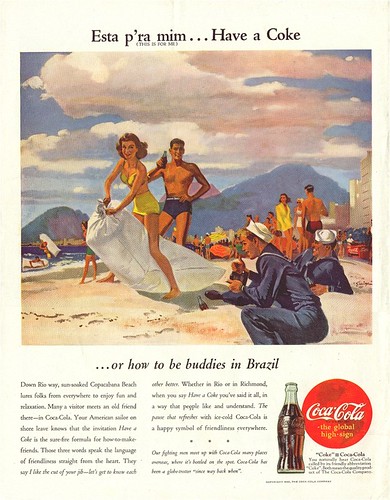1. Which Magazine?
 Magazines can be excellent source of advertising, but you have to know which one. Besides choosing a magazine with readers that will be intrigued by your products and/or services, you most likely want to choose a magazine with a large readership.
Magazines can be excellent source of advertising, but you have to know which one. Besides choosing a magazine with readers that will be intrigued by your products and/or services, you most likely want to choose a magazine with a large readership.Determining the level of readership for the magazine should be one of the first aspects looked into, but sometimes the reports of readership can be misleading. A magazine may tell you that over 100,000 people will be exposed to your ad. That sounds great but the magazine only prints about 60,000 copies. Even establish industry standards such as the Audit Bureau of Circulation (ABC) or research by third-party companies such as Nielsen can be inaccurate, to put it succinctly.
When it comes to determining which magazine sell best - I use this simple trick which I call the book store test. On the first week of every month, I will go visit several book stores and physically count how many copies of magazines are displayed. I do that again at the end of each month and from there I will be able to determined roughly (but free of 'third party' claims) which magazine sell well. In so doing, I choose smaller stores at good location, as these stores rarely keep extra copies beyond what they have on display - so I eliminate the possibility of copies being replenished ex-stock.
2. Media Kits.
When contacting a magazine about possible advertising, ask them to send you a media kit. The media kit will contain useful information and will provide you with a better outlook about the company.
The kits include:
- Sample issue of the magazine
- A rate card which explains the advertising rates, allowable discounts, positioning, etc
- Advertising specifications
- Circulation information
3. AD Size.
Ad sizes differ and the prices differ as well. It is suggested to start small and see how well the ad is attracting costumers. A well worded and graphically intrguing ad will always be better than a dull but big. A good idea would be to look at the other advertisement in the magazine and see what your ads to 'stand out' from other ads, so you may choose to go bigger or smaller to mark a sense of differentation. This is something you will eother want to assess for yourself of by getting some advise from a third party. You do not want to seek the consultation of the magazine because they will obviously tell you to go with the bigger size which will mean more money for them.
4. AD Placement
 Just as size matters, placement matters as well. Your ad's effectiveness may be contingent on it being in the front,middle or back of the magazine. This is another reason to get a familiarity with the magazine before placing ads within it. If the magazine is in the habit of putting their most intriguing (cover) articles in the middle of the magazine, then ot would logical to assume that most readers will be perusingthrough that portion of the magazine and will most likely see the ads palced there as well.
Just as size matters, placement matters as well. Your ad's effectiveness may be contingent on it being in the front,middle or back of the magazine. This is another reason to get a familiarity with the magazine before placing ads within it. If the magazine is in the habit of putting their most intriguing (cover) articles in the middle of the magazine, then ot would logical to assume that most readers will be perusingthrough that portion of the magazine and will most likely see the ads palced there as well.Unfortunately a lot of magazines usually call the shots as far as placement goes; or if an advertiser wants to have more of as say, it menas they will have to pay more money. Regardless of the size of your ad, it may be good to see if you can get it juxtaposed to text. A lot of readers grow anxious when confronted with a block of text and their eyes naturally begin to wander sor some other stimulation. A lot of publisher will block advertisements together. This creates a break from text, but most likely reader will not look at every single ad on a age full of ads.
Usually, a really enticing headline or out-of-the-ordinary coloring will make an ad standout. This idea will wprk great in the midst of the magazine, but will not be necessary in other sections. If the magaznie usually runs ads in the back and readers know this, they will already go to the back to make a possible purchase anyway. In this scenario a solid advertisement will serve you well, but it doesn't have to be as overt because the consumer is already looking to make a purchase (they are looking for you instead of vice versa).
5. Rates.
Depending on the popularity of the magazine, rates will vary. The good thing is though most rates may be standard, they are not set in stone and exceptions do apply. For instance, if you are a first time advertiser, the publisher may offer you a discount to make a good first impression or to assuage any anxiety in soending money with them to begin with. The frequency of your ads and the size of each will play a part in how much money you will spend with the magazine. If you make a long-term commitment with them (say over the next couples of years) you will most likely get discounted rate as opposed to an advertiser that is fickle in their nature with working with them.
By William Ng of SMA & Entrepreneurship Malaysia Magazine
Read full articles here!






















